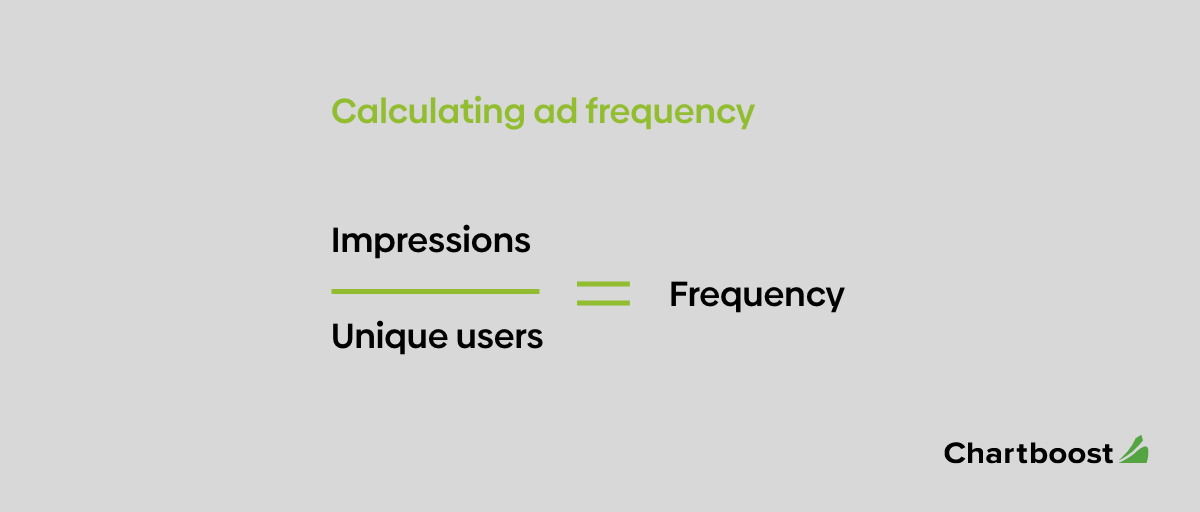Picture this: a player is eager to finally reach the next level in your mobile game when suddenly an ad takes over the screen. They’ve reached their breaking point. They feel like they get served ads way too often and they’ve had it: they’re dropping your game for good. After all, 55 percent of people play mobile games to relax and unwind — not to be bombarded with ads.
That’s why it’s critical to strike a balance in how often users see ads without interrupting gameplay and ruining the experience. Identifying the right ads to show at the right time helps improve player engagement, revenue, and lifetime value (LTV). But how do you ensure they won’t lose interest and stop playing because of an ad?
The best ad strategies seamlessly integrate the types of ads and the number of times it’s shown with gameplay. This creates a win-win environment for both you (higher click-through rate [CTR], retention, LTV) and users (engaged and having fun!).
It’s okay if you haven’t quite figured out how to do this — it’s not something you can figure out in a day or even a week. It takes consistent testing and monitoring to find a strategy that works for your mobile game.
This article will help you learn strategies for balancing ad load and frequency by understanding things like ad frequency best practices and ad frequency capping best practices.
Ready to improve player experience and LTV?
What is ad frequency?
Ad frequency is the average number of times a user is shown an ad over a certain length of time. It’s a measurement that reveals how ad frequency impacts a specific campaign’s effectiveness. It also helps advertisers understand how many users were reached and the number of times.
The formula for ad frequency is calculated by dividing unique users by impressions.

Enhancing the overall experience with rewards
These days, users expect to see ads in their favorite games, but they don’t want to be jarred by them. Ads that offer value in the form of an extra life or more coins help players feel motivated to reach the next level.
They may also entice users to unlock premium content without having to spend money and be used to help cross-promote other games, products, and services within your portfolio.
Burnout from too many ads
As a mobile game developer, you have a relatively short window to capture your audience to prevent an uninstall. According to AppsFlyer, 49% of gaming apps are uninstalled in the first 30 days of download.
One of the main reasons users uninstall apps is due to a misalignment between what was promised and the actual app experience. When ads are intrusive, too frequent, or not relevant, it might cause users to completely remove your game from their device. Or maybe they’ve had enough and are experiencing ad fatigue.
The potential negative outcomes caused by ad fatigue include:
- Reduced retention and greater churn: Users may bounce and look for other games that don’t show as many ads.
- Brand perception: Players may believe your brand to be spammy and stay away from other games in your portfolio.
- User ratings: Your mobile game might be a masterpiece, but if players are unhappy, it may manifest in reviews and stars.
The specific type of ad a user is exposed to is also an important consideration. Some ads may not be as effective or have the level of engagement you’d like. For example, if you frequently show banner ads, which tend to have low click-through rates, players may not even notice them anymore. It just becomes wallpaper.
In either of these scenarios, you may notice a drop in your campaign performance numbers or an increase in your uninstall rates. This is why you need to figure out your ad frequency cap.
What to know about an ad frequency cap
An ad frequency cap puts limits on how many times users see ads. Even Google added new frequency options to YouTube, providing more control over how often promotions are shown to users from advertisers.
So how do you figure this out and what’s a good number to cap your ads at? Like anything in mobile, it’s all about testing and discovery. In a study conducted by SocialMediaToday, it looked at 10,000 ads across multiple accounts and saw that the peak frequency an ad is shown is between 1.8 and four views on average.
As frequency rises, so does the cost per acquisition (CPA). If users aren’t taking action, they are likely not the right audience for those ads in the first place or they’re turned off by the number of times they’re exposed to them.
Fear not, there are ways you can master the balance of engagement and revenue with how frequently ads are being shown. Let’s talk about how you can figure out this frequency cap through A/B testing.
Ad frequency A/B testing
Understanding level of engagement and how often to show ads starts with collecting and analyzing data. You should A/B test to collect optimal ad load and frequency data. Don’t make the mistake of testing your entire user base; it could end up being a not-so-great experience, that leads to lots of drop-out.
Start instead by choosing 10 percent of random users or segmenting a specific audience and its impact on revenue. Also choose a goal, such as increasing ad revenue while minimizing the impact on user retention.
Segment users based on specific sets of variants, such as groups of users and how frequently they play. Users who play an average of two hours will likely have more of an acceptance of ads, versus those who only play the game for half an hour.
Make sure to include the most relevant user segments, limit the negative impact of any testing, and ensure the cohort is large enough to yield meaningful results. Use the data you collect from your testing to monitor user behavior and level of engagement with ads and then adjust the ad load and frequency.
Ad placement and relevancy matters
Strategically placing ads in places where natural breaks occur in your game may help reduce disruption for players. Show rewarded ads when players need an extra life or more gems.
For example, Angry Birds Dream Blast uses rewarded video ads to maximize ad revenue and LTV. Ads are placed between levels, and players can watch one in return for a daily reward or longer playtime, get a free booster at the beginning of a level, retry a failed level, or even reclaim lost rewards.
Rovio also segmented non-paying users and tested a specific rewarded ad and believed it would see an increase in revenue from in-app purchases (IAP) and ads.
In the end, they learned that well-placed ads can boost total LTV. Showing the right ads to the right players would yield positive results and revenue.
In another example, Candy Crush shows rewarded videos to players, usually between 30 and 60 seconds long, that provide different types of boosters to help complete a level. A part of the game’s ad strategy is to wait until players have made it relatively far before serving them ads. For high-spenders, the game doesn’t show any ads at all.
Ads on Candy Crush can be turned up or down depending on individual players’ activity or personal preferences.
Maximizing ad revenue and LTV through existing customers
Finding better ways for ad placements and timing them correctly may also improve LTV from existing users — aka, the players who are more likely to make a purchase. One report shows the likelihood of selling to an existing customer can be up to 14 times greater than selling to a new customer. Another study shows existing customers are more likely to spend 31 percent more than new customers.
If you aren’t using one already, consider a programmatic ad mediation platform, such as Chartboost Mediation, to help you automatically optimize ad delivery across multiple ad networks, exchanges, and demand sources.
Programmatic advertising helps game publishers gain access to a variety of ad networks and automatically optimize ad placements across multiple ad networks. It allows you to maximize opportunities for revenue and save time by removing the burden of manual data entry and performance evaluation.
Final thoughts
Finding the right balance of ads in your mobile game can keep players engaged without having to sacrifice ad revenue.
Keep a pulse on the types of ads that are being shown and how relevant it is to the user in that moment. Monitor ad load and frequency based on metrics such as retention rate, session length, engagement rate, CTR, and/or conversions. Encouraging users to submit feedback or giving them more control through opting out or adjusting their ad settings can provide additional data to figure out the best strategy.
In the end, it’s all about keeping users happy and giving them the best experience possible. When you integrate ads into your games seamlessly and provide value to users, you increase your chances of gaining greater engagement, retention, and LTV.
For more on the best practices for ad optimization, keep it tuned right here for more helpful Chartboost Academy resources as well as our blog, webinars, and The Business of Fun podcast and newsletter.



